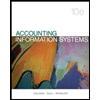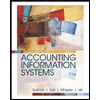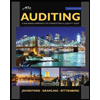
Narrative 1: Good Buy, Inc (good-buy.com)
Good Buy, Inc. (a fictitious company) sells a variety of consumer pro-ducts through its Web site, good-buy.com. Good Buy's IT infrastructure consists of a front-end Web server that interacts with customers and a back-end ERP system that manages the inventory and performs other typical ERP functions. The sales order process begins when a customer logs an to the good-buy.00m Web site. The customer requests the company catalog and the Web server obtains the current Good Buy online catalog fmm the ERP system, which sends the catalog to the Web server, and the server displays it to the customer. The customer selects the items and quantities that he or the wants to purchase; the Web server edits the customer input for accuracy (e.g, ensures that all required fields have been selected or frilled in) and sends this list on to the ERP system, where the requested quantities of inventory are allocated for the sale. The ERP sends back to the Web server the quantities that have been allocated, and the Web serverdisplays this information on the customer's semen. The customer verifies that the order is correct and completes the sale by entering his or her shipping and credit card information. The Web server edits this data for accuracy (e.g, enmra that all required fields have been selected or filled in and that the length of the entered credit card number is correct) and sends the credit card information and amount of the sale on to the credit card company. The credit card company sends back a verification number, and the Web server notifies the customer that the sale has been completed by displaying a confirmation number on the customer's screen. The Web server also notifies the ERP system that the sale has been completed, and the ERP system changes the status of the inventory from allocated to sold, prints a picking ticket or packing slip in the warehouse, and records (on the enterprise database) a sale and an account receivable from the credit card company.
Use the narrative(s) as selected by your instructor, to prepare a table of entities and activities. Annotate the table of entities and activities to indicate on this table the groupings, bubble numbers, and bubble titles to be used in preparing a level 0 logical DFD. Prepare a logical DFD (level 0 only) based on the table you prepared. If you completed any of the previous problems, use that information to help you construct the diagram.
a. Use Microsoft Visio, any other diagramming software or another Microsoft office product such as Excel to create the diagram you drew in SP 4-7.
Trending nowThis is a popular solution!

Chapter 4 Solutions
Accounting Information Systems
- What is the 4% rule in retirement planning in finance? no aiarrow_forwardWhat is the 4% rule in retirement planning in finance?arrow_forward(Calculating NPV) Carson Trucking is considering whether to expand its regional service center in Moab, Utah. The expansion will require the expenditure of $10,000,000 on new service equipment and will generate annual net cash inflows from reduced costs of operations equal to $2,500,000 per year for each of the next 8 years. In year 8, the firm will also get back a cash flow equal to the salvage value of the equipment, which is valued at $1 million. Thus, in year 8, the investment cash inflow will total $3,500,000. Calculate the project's NPV using a discount rate of 9 percent. If the discount rate is 9 percent, then the project's NPV is (round your answer to the nearest dollar) Sarrow_forward
 Pkg Acc Infor Systems MS VISIO CDFinanceISBN:9781133935940Author:Ulric J. GelinasPublisher:CENGAGE L
Pkg Acc Infor Systems MS VISIO CDFinanceISBN:9781133935940Author:Ulric J. GelinasPublisher:CENGAGE L Accounting Information SystemsFinanceISBN:9781337552127Author:Ulric J. Gelinas, Richard B. Dull, Patrick Wheeler, Mary Callahan HillPublisher:Cengage Learning
Accounting Information SystemsFinanceISBN:9781337552127Author:Ulric J. Gelinas, Richard B. Dull, Patrick Wheeler, Mary Callahan HillPublisher:Cengage Learning Accounting Information SystemsAccountingISBN:9781337619202Author:Hall, James A.Publisher:Cengage Learning,
Accounting Information SystemsAccountingISBN:9781337619202Author:Hall, James A.Publisher:Cengage Learning, Auditing: A Risk Based-Approach to Conducting a Q...AccountingISBN:9781305080577Author:Karla M Johnstone, Audrey A. Gramling, Larry E. RittenbergPublisher:South-Western College Pub
Auditing: A Risk Based-Approach to Conducting a Q...AccountingISBN:9781305080577Author:Karla M Johnstone, Audrey A. Gramling, Larry E. RittenbergPublisher:South-Western College Pub College Accounting, Chapters 1-27AccountingISBN:9781337794756Author:HEINTZ, James A.Publisher:Cengage Learning,Principles of Accounting Volume 1AccountingISBN:9781947172685Author:OpenStaxPublisher:OpenStax College
College Accounting, Chapters 1-27AccountingISBN:9781337794756Author:HEINTZ, James A.Publisher:Cengage Learning,Principles of Accounting Volume 1AccountingISBN:9781947172685Author:OpenStaxPublisher:OpenStax College





